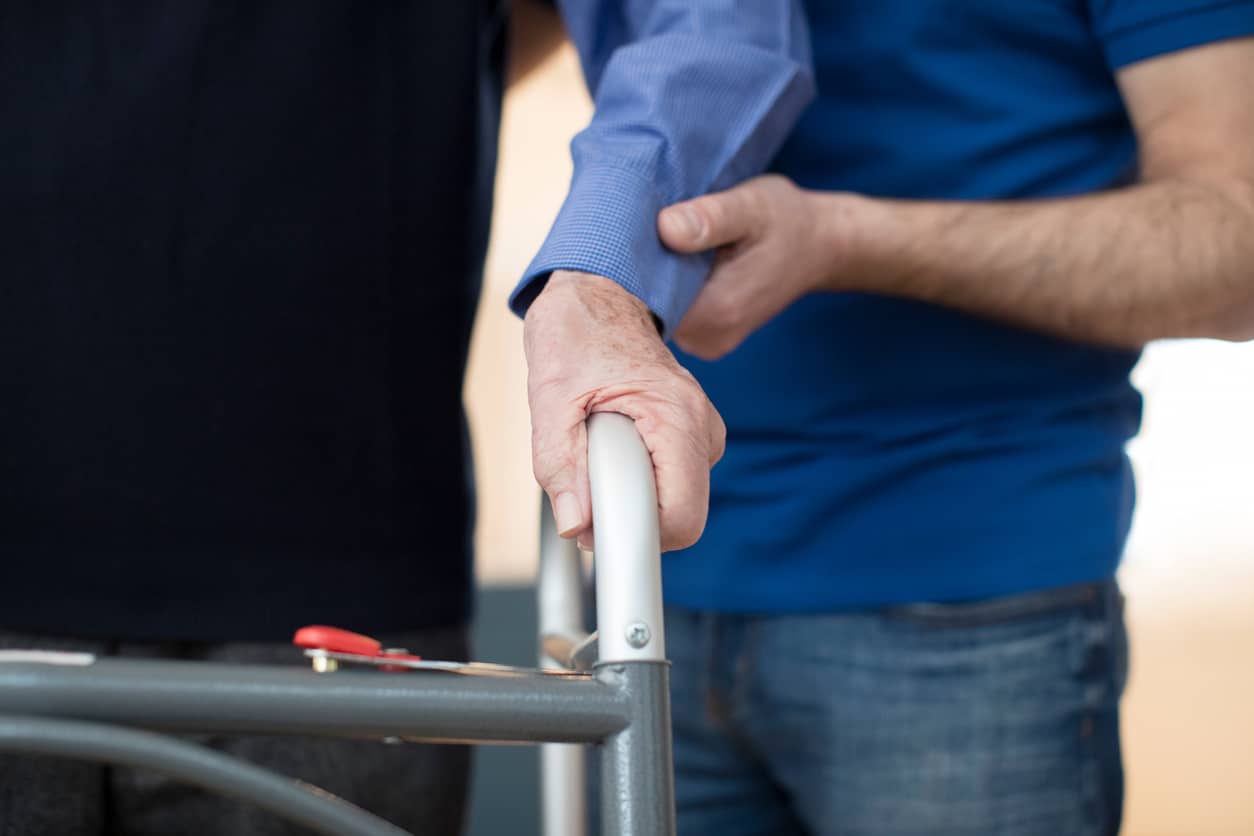Occupational therapists are part of a core team of professionals that help individuals regain mobility and overcome physical challenges daily. Whether recovering from an injury that sidelines for temporarily, or if you are rehabilitating from permanent effects of a stroke, an OT professional can help increase access and optimize mobility when working with clients. April is Occupational Therapist Month; pay tribute to these providers that improve lives every day.
If you live with mobility issues, it is possible that you have met with or worked with an occupational therapist or occupational therapy assistant. OT professionals are part of a team that typically work collaboratively to assist patients and clients with Activities of Daily Living (ADLs), like bathing, dressing, and eating. Naturally, there are other tasks that an OT provider will work on- such as helping a recovering athlete heal an injury and get back on the field or identifying areas that the patient may benefit from adaptive aids, like a grab-bar or special cutlery.
What do Occupational Therapists Do?
Generally, clients are referred to an occupational therapist by another provider, such as your family doctor. The reasons may vary, from an injury, surgery, or medical condition that impacts your ability to complete activities of daily life. These professionals take a holistic approach and customize their treatment plan to the individual. For instance, a child may require assistance in coping with social situations while a senior recovering from surgery may need assistance getting up and walking. Furthermore, it is part of the OT provider’s role to complete a thorough assessment to identify areas of need with each client/patient, as these will vary greatly from person to person.
How Mobility Aids Can Help
So, how can mobility aids help an individual with limited mobility? It may be evident that things like stairlifts can help an individual that has physical challenges move around their home, but there are other subtle aids that can also enhance life every day. For instance, a basic ‘reacher’, or reaching tool, can prevent a nasty fall when users extend or bend to reach for something. These devices can also be used to button or zip clothing and apparel, as needed. Some other mobility aids include:
- Portable ramps around the exterior of a home, as well as to help inside with risers or thresholds, can help prevent issues for individuals that could fall or struggle with lifting their legs to navigate these obstacles.
- Grab bars are effective at preventing falls and proving a bit of support and stabilization where it is needed most in the home living situation. For example, bathrooms can be dangerous due to frequent damp or slippery conditions; a grab bar near the toilet, sink, and tub can give a hand as needed. These bars are inexpensive and easy to install.
- A shower seat can be a real lifesaver for those that are trying to maintain autonomy and complete ADLs. It reduces the risk of a fall in a slippery tub or shower by providing a stable place to sit and bathe, taking the pressure off of their feet. It also can help those suffering from vertigo that may get dizzy and risk a fall during a shower. These are simple and easy to implement.
- Lifts come in all sizes and styles; stairlifts are one type but there are others including porch lifts, vehicle lifts, ceiling, and free-standing lifts. These can be uses to transport individuals with mobility deficits from one spot to another, without putting as much risk and strain on the caregiver. Many of these lifts can be used independently by the user, such as a vehicle lift, which can increase autonomy for those that want to drive once more.
Talk with a qualified and reputable mobility aids retailer to find exactly what you are looking for and to see a demonstration to ensure you are satisfied later.
April is Occupational Therapy Month
Occupational therapy is an integral part of the continuum of care and recovery for anyone with mobility issues or physical limitations. April is Occupational Therapy Month– celebrate! Whether you are a part of this vital industry, helping others improve quality of life, or if you are someone who receives services from an OT professional, pay homage to the field. Occupational therapists change lives for the better, which is definitely worth celebrating.
Another way that you can change lives for the better is by increasing mobility and overcoming physical challenges with mobility aids. Pacific Mobility is proud to offer their clientele top-of-the-line products made by quality brands and unsurpassed customer service. For a consultation, installation, service, or simply to ask a question, call us today. We want to provide you with a free, no-commitment comprehensive assessment via the phone to identify which of our mobility aids can improve your life. Customers can depend on our team of qualified professionals to make life better, and a bit easier; call today.
President, Husband, Father, Grandfather Graduate of UC Davis- Bio Sci Major- Go Aggies! Jeff has extensive experience in all of Pacific Mobility’s products and services, and specializes in accessibility products as well as stairlifts, ceiling lifts and custom wheel chairs. His hobbies include spending time with family, gardening, mountain biking, exercising and off road motorcycle riding.
24 years as Owner/President of Pacific Mobility Center – selling, installing, and servicing stairlifts, porch lifts, ceiling lifts, pool lifts, handicap ramping, specialty wheelchairs, scooters, power wheel chairs, and other power mobility devices
Certified Environmental Access Consultant since 2008
Licensed General Contractor since 1998
Certified Aging in Place Specialist since 2016
Board Member for Home Access Professionals
Member of Association of Members of the Accessibility Equipment Industry (AEMA)




